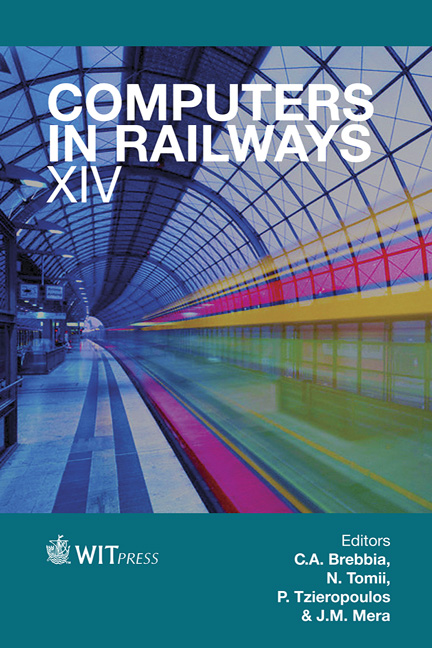An Analysis Of Different Sensors For Turnout Detection For Train-borne Localization Systems
Price
Free (open access)
Transaction
Volume
135
Pages
12
Page Range
827 - 838
Published
2014
Size
1,414 kb
Paper DOI
10.2495/CR140691
Copyright
WIT Press
Author(s)
D. Stein, M. Lauer & M. Spindler
Abstract
Safe railway operation requires a reliable localization of trains in the railway network. Hence, this paper aims to improve the accuracy and reliability of train-borne localization systems proposed recently. Most of these approaches are based on a global navigation satellite system (GNSS) and odometers. However, these systems turned out to have severe shortcomings concerning accuracy and availability. We believe that the ability to detect turnouts and the branching direction thereon is the most valuable clue for improvement. Knowing the branching direction provides topological information about the train position. Thus, it complements the geographical information of GNSS and the longitudinal position information of odometers in an ideal way. With such a sensor setup a track-selective localization would be possible even if GNSS is unavailable or disturbed. Therefore, this paper compares the individual benefits of different sensor principles for turnout detection such as inertial measurement units (IMUs), cameras, and lidar (light detection and ranging) sensors. As a consequence, we focus on lidar sensors. For those we define requirements, review the market, and report the results of a case study in a tramway scenario. We proved that it is possible to detect rails, turnouts, and platforms. Finally we discuss our findings intensively and give an outlook on our further research. Keywords: train-borne localization, turnout detection, sensor comparison, lidar sensor, GNSS, IMU, camera, eddy current sensor, digital track map.
Keywords
train-borne localization, turnout detection, sensor comparison, lidar sensor, GNSS, IMU, camera, eddy current sensor, digital track map.





